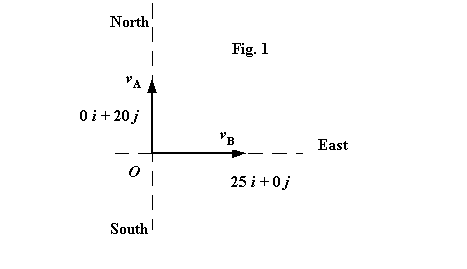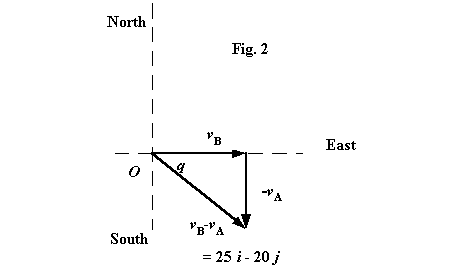In Section 1, “Velocity and Acceleration” the motion considered is relative to that of the earth which is assumed to be fixed. The Section on Relative Motion deals with problems involving relative motion. (Assume that the dimensions and masses of the bodies can be ignored i.e. they are treated as particles or points).
For example, two cars, A and B, are travelling in the same direction with velocities of 20 m/s and 25 m/s respectively, relative to the earth. However, the velocity of B relative to A is 25 ?20 = 5 m/s


